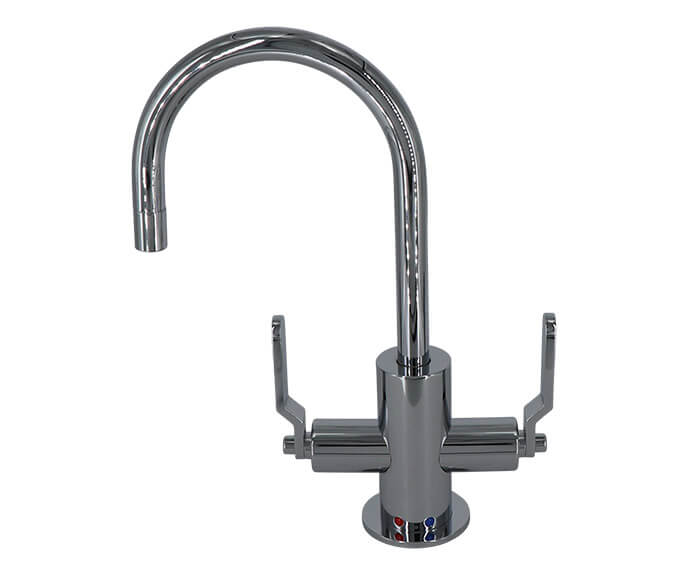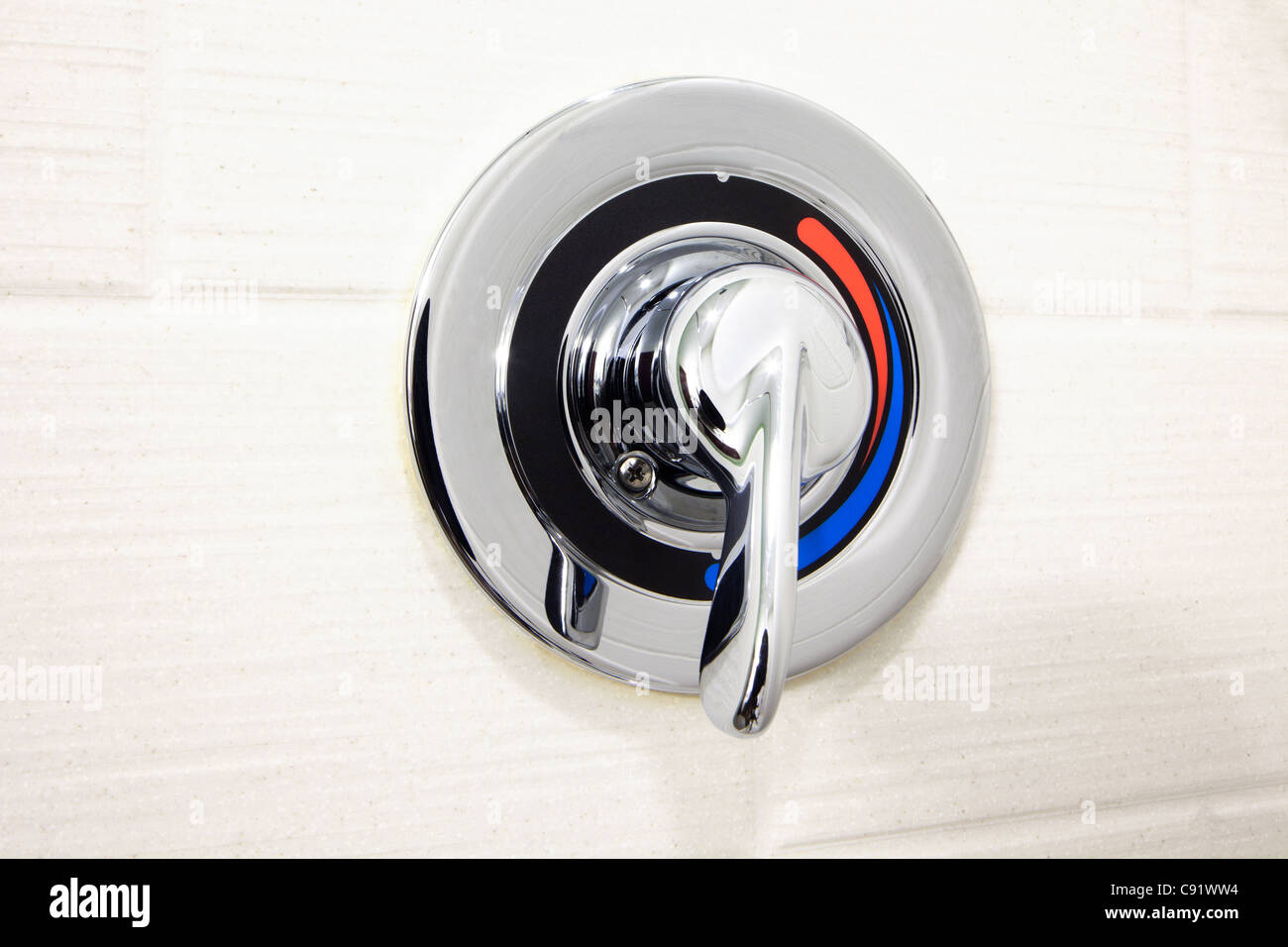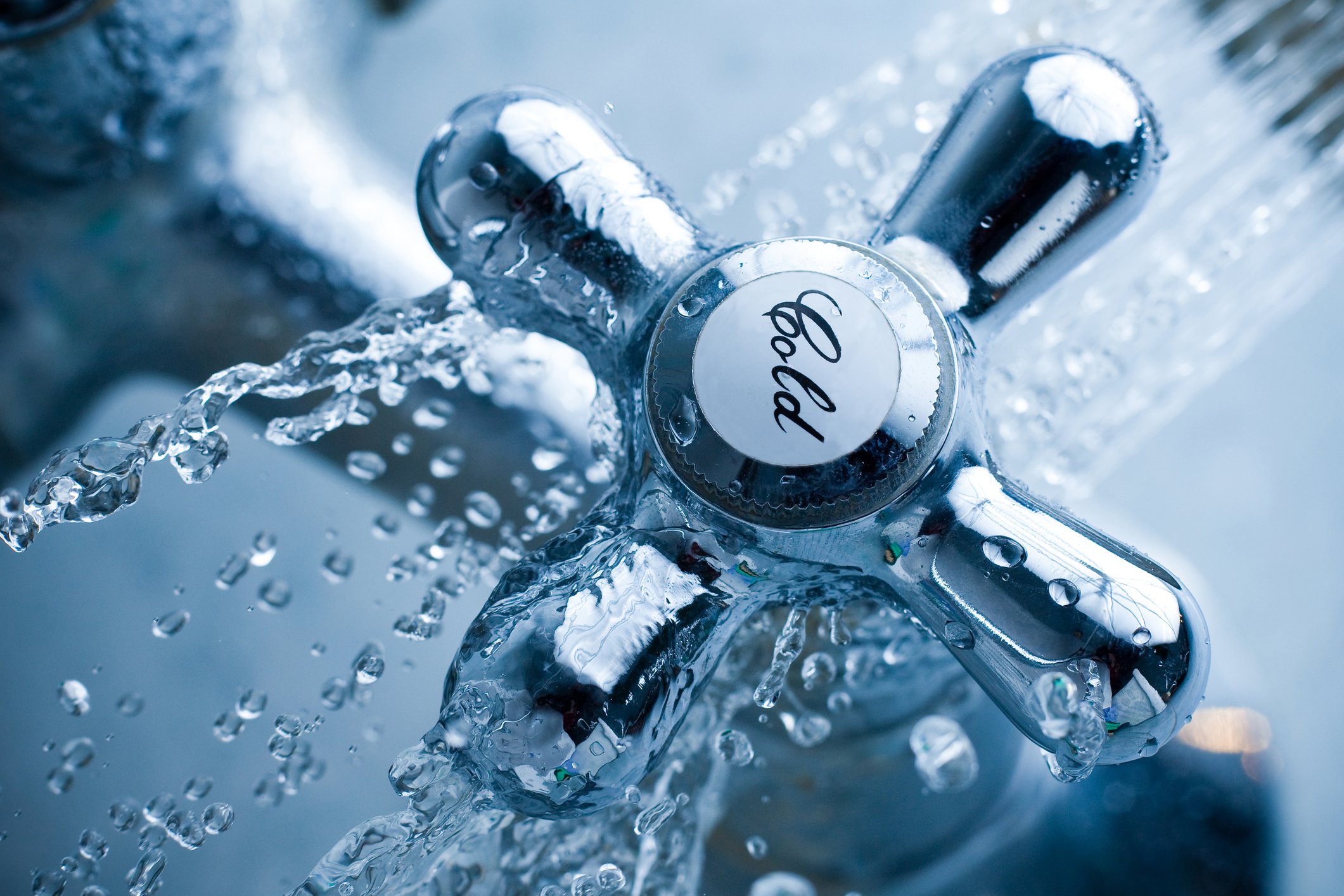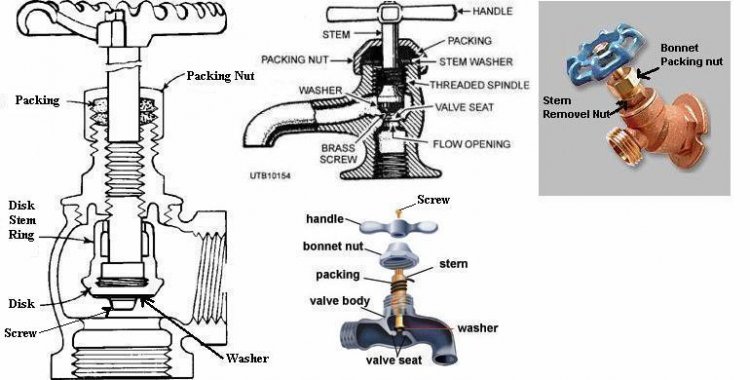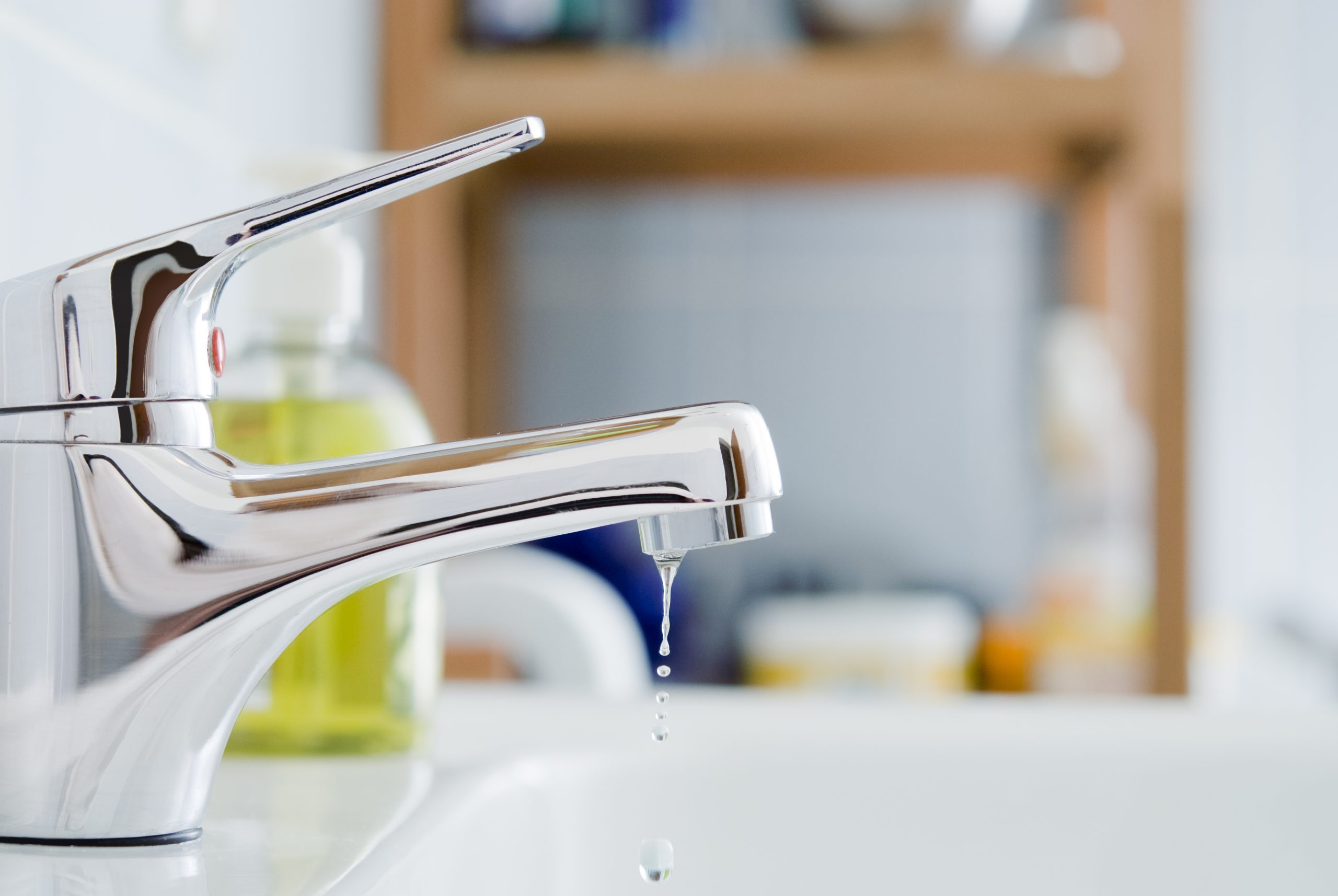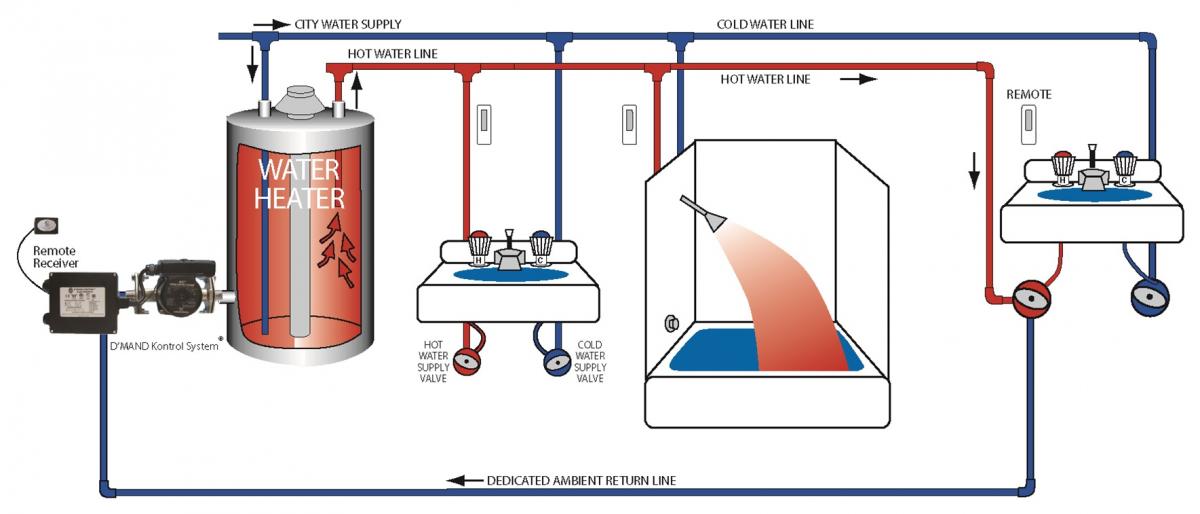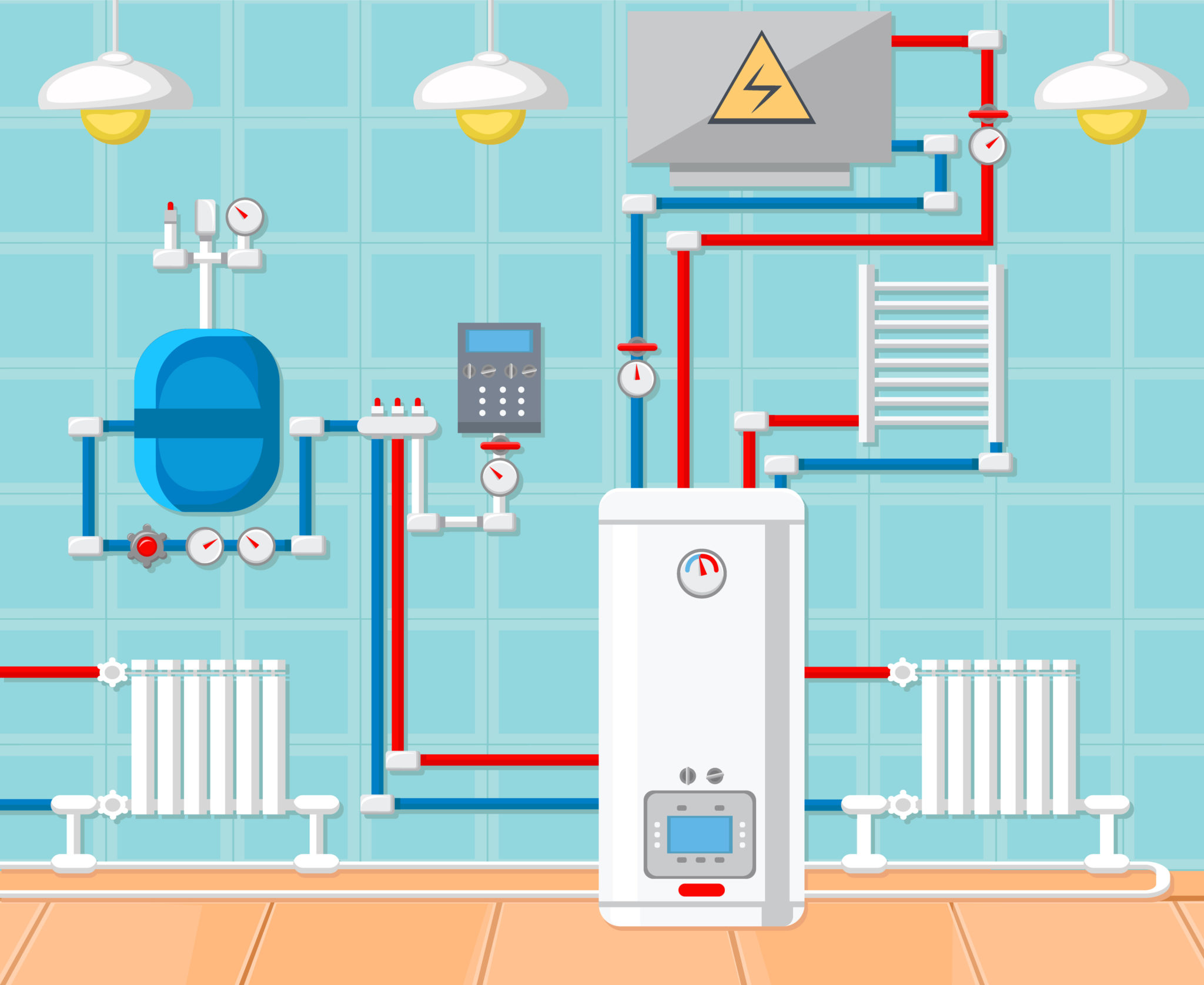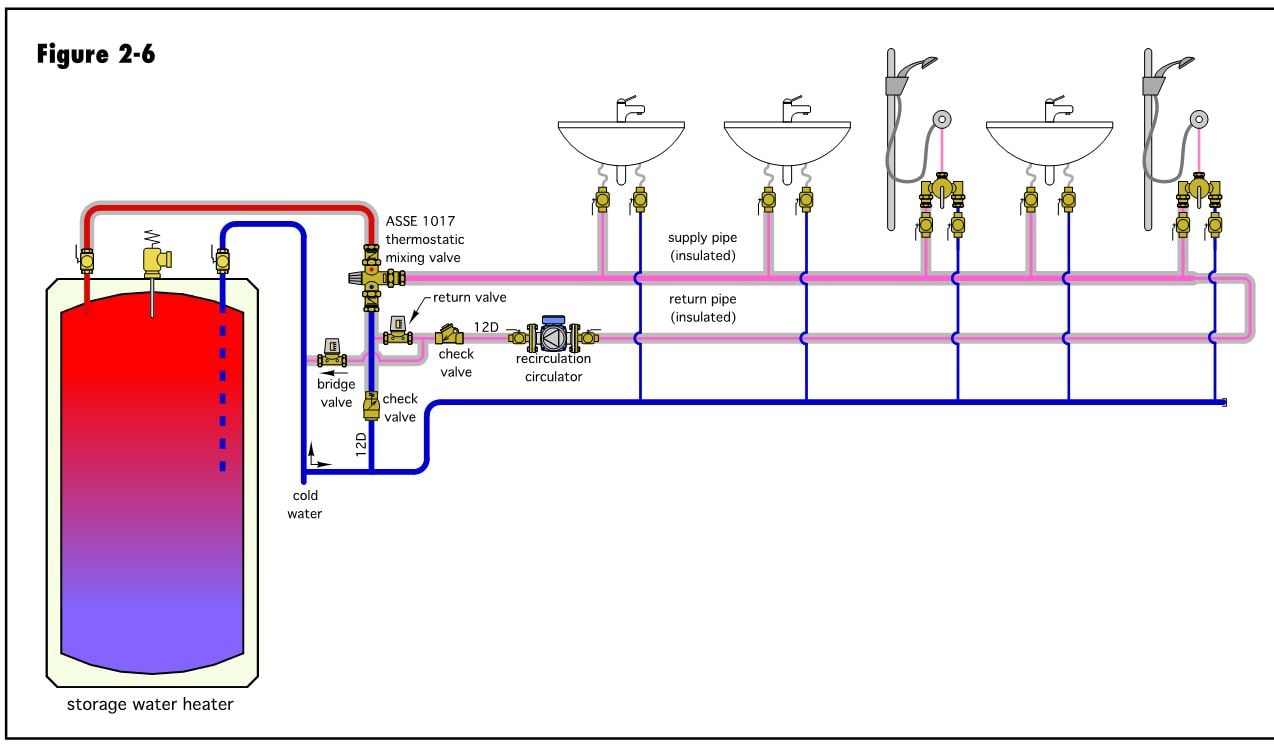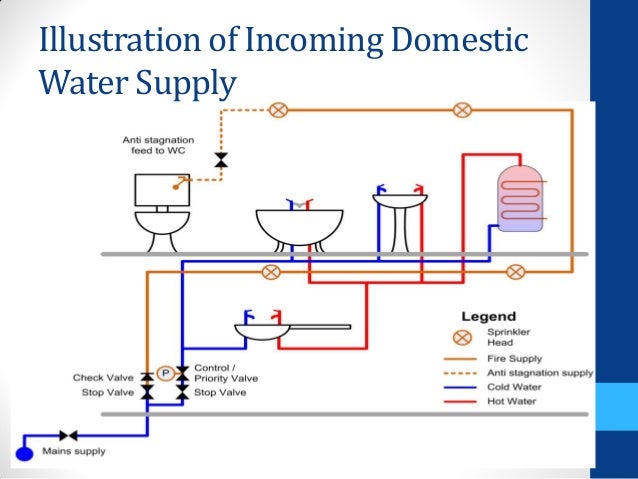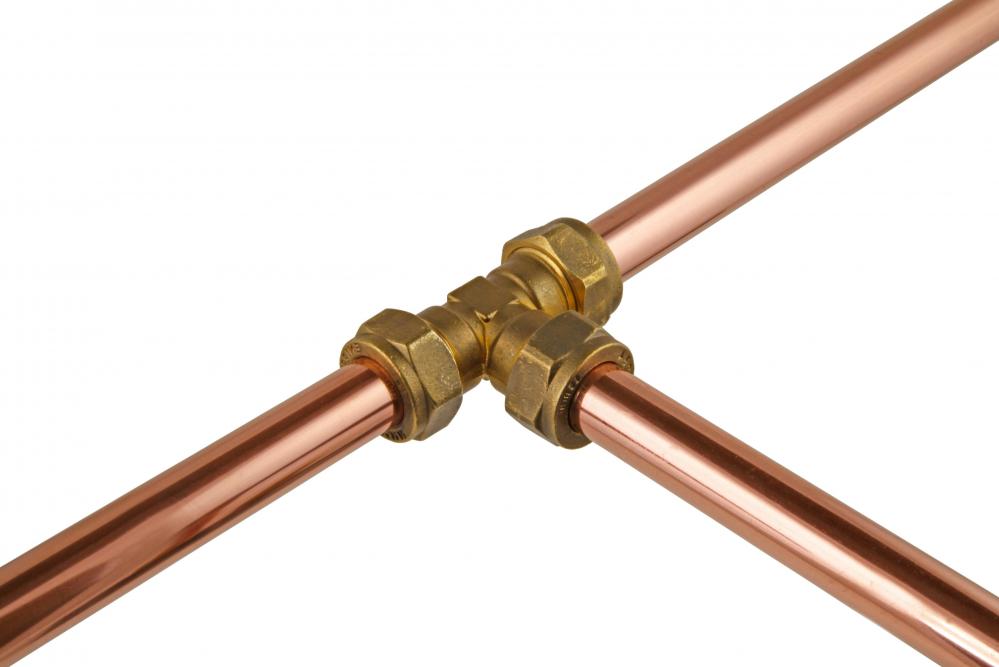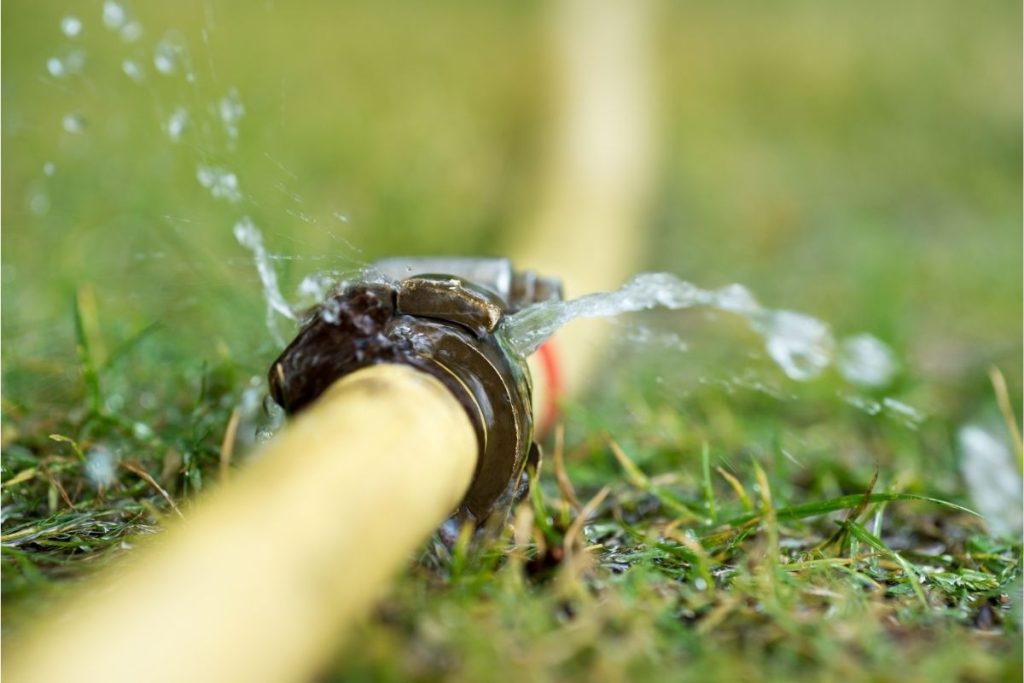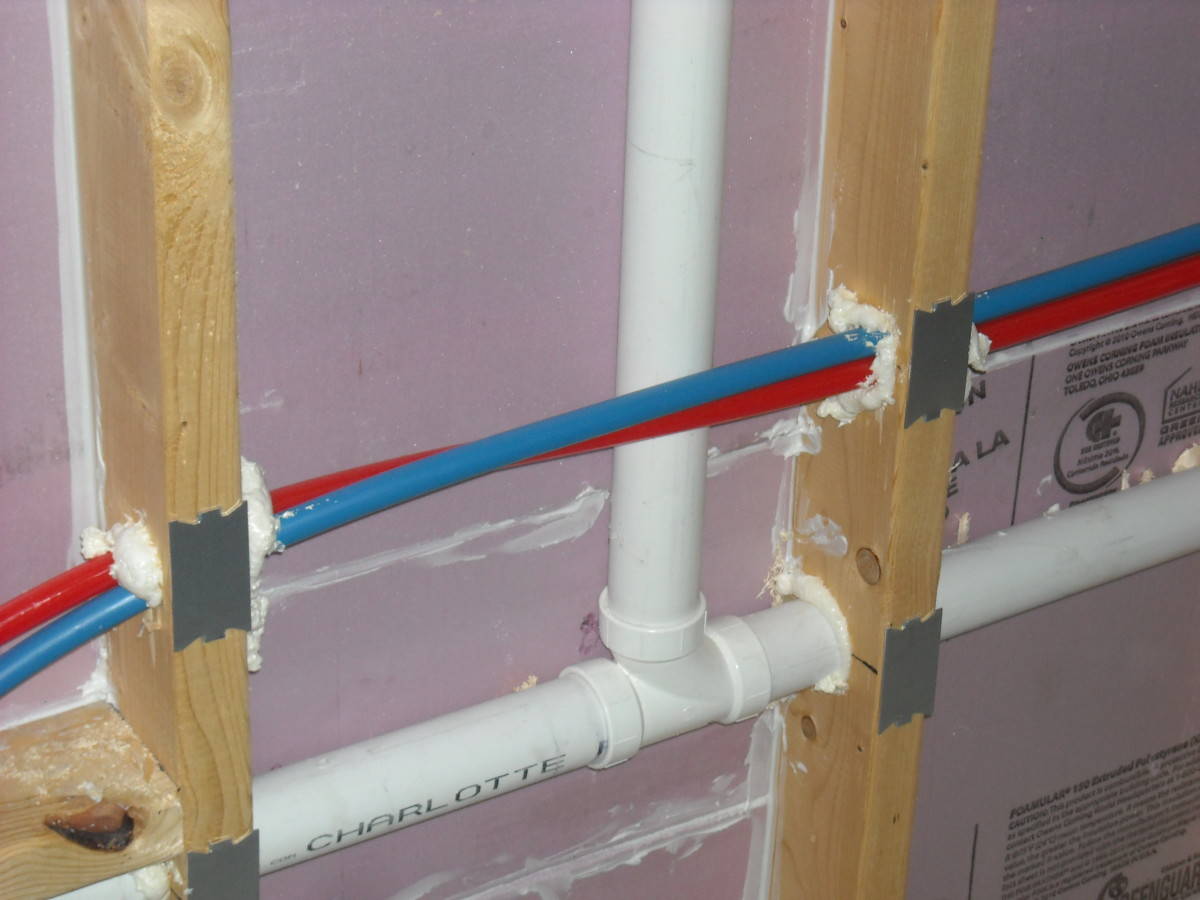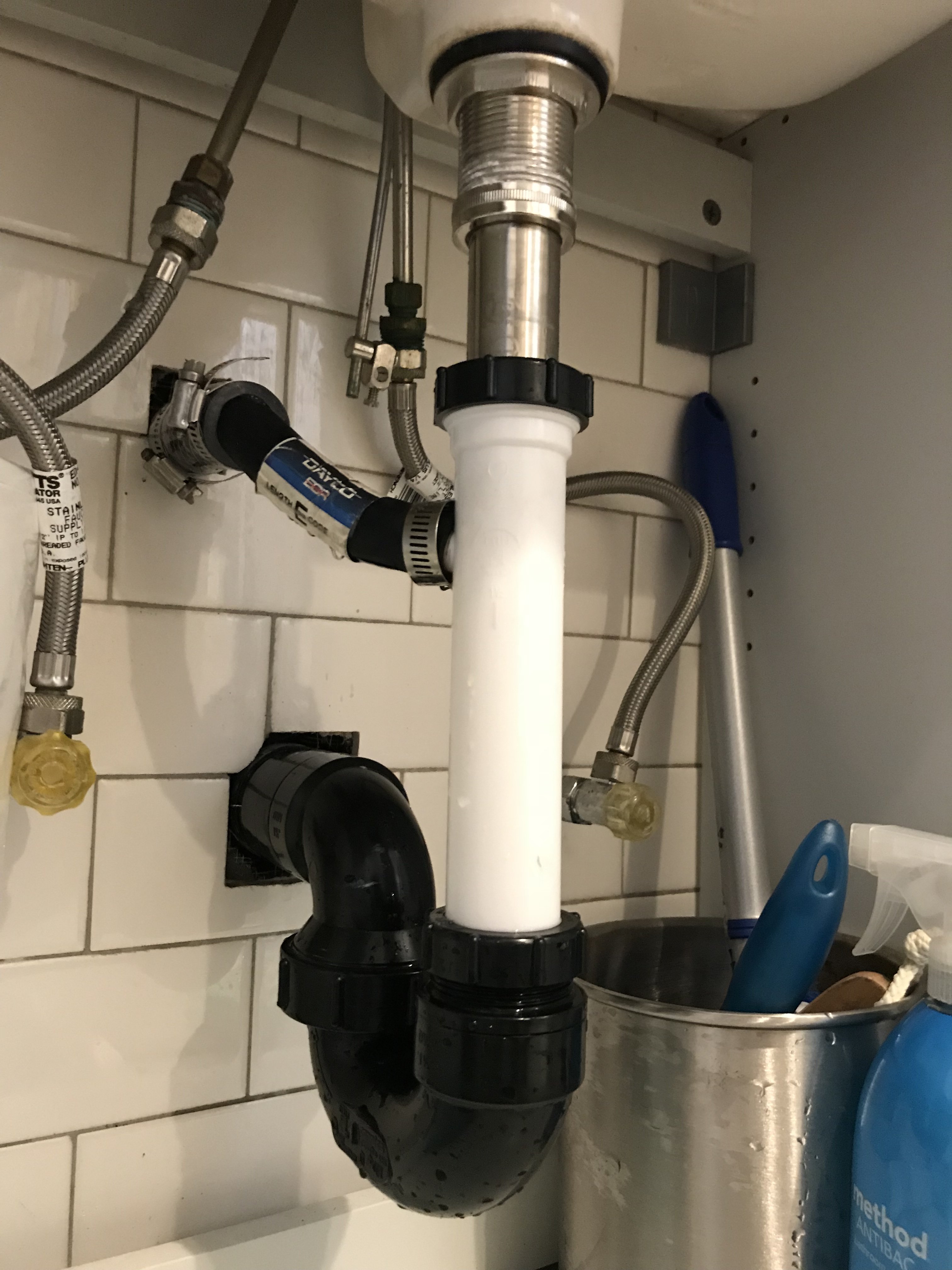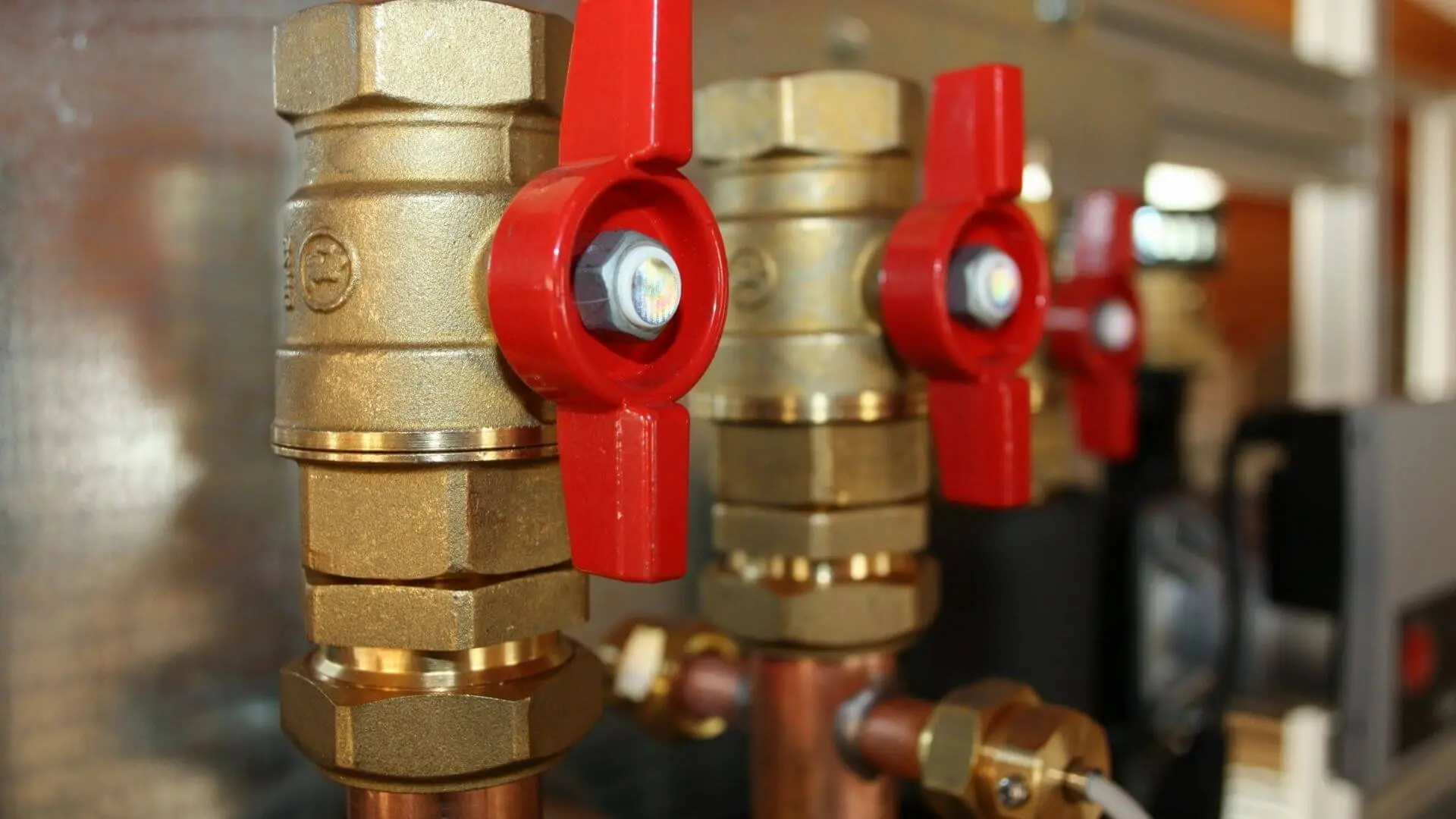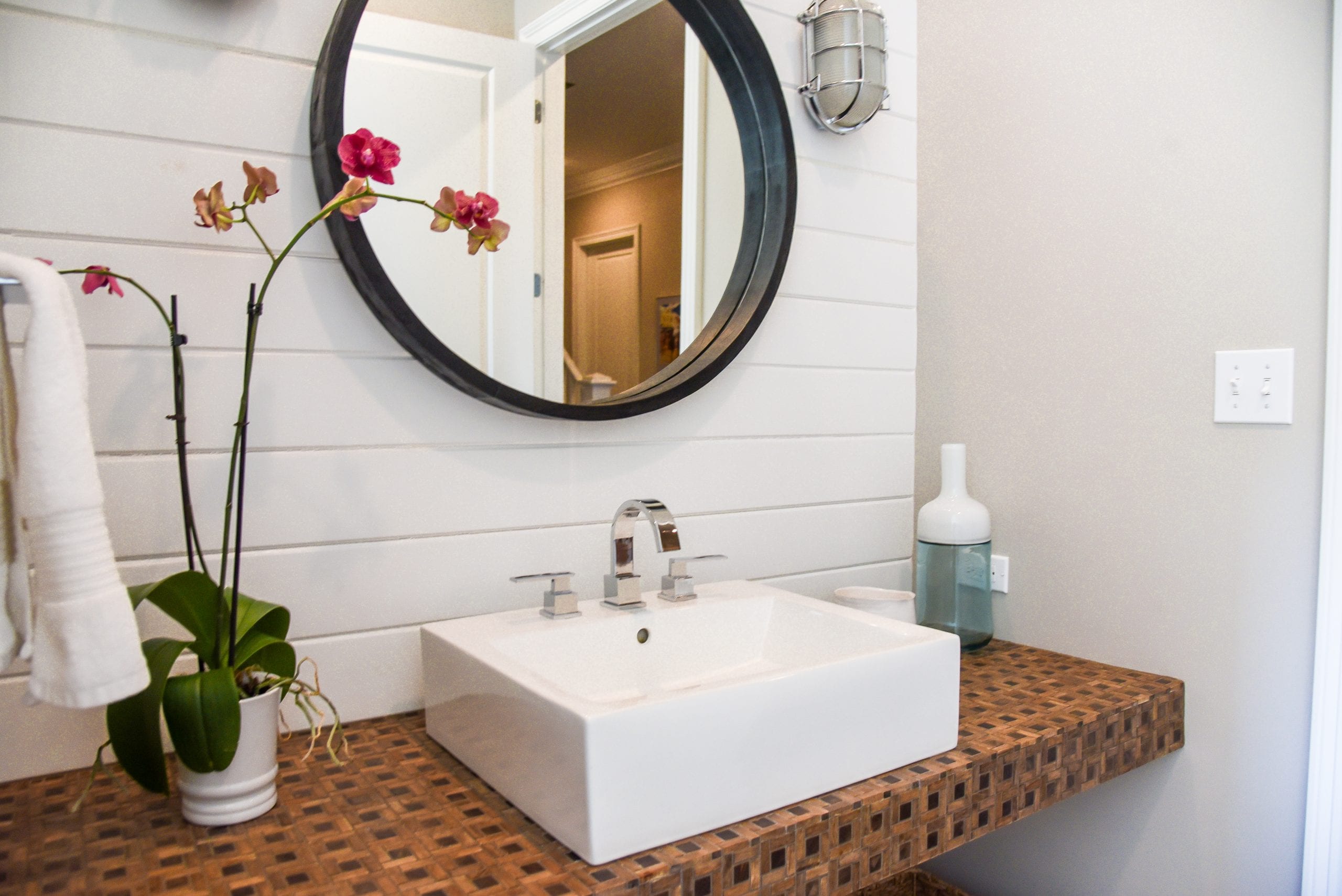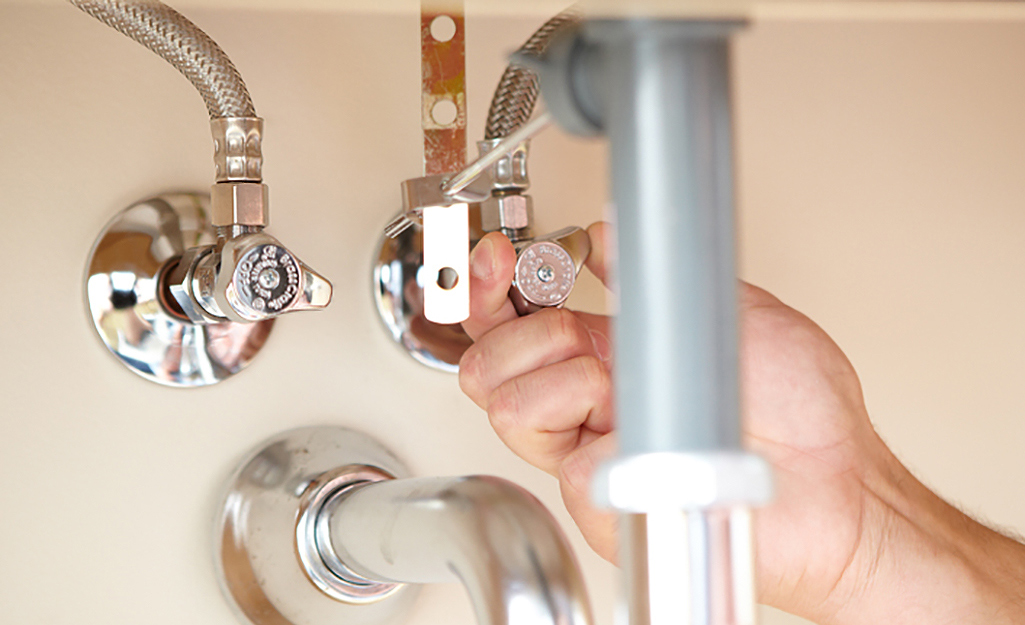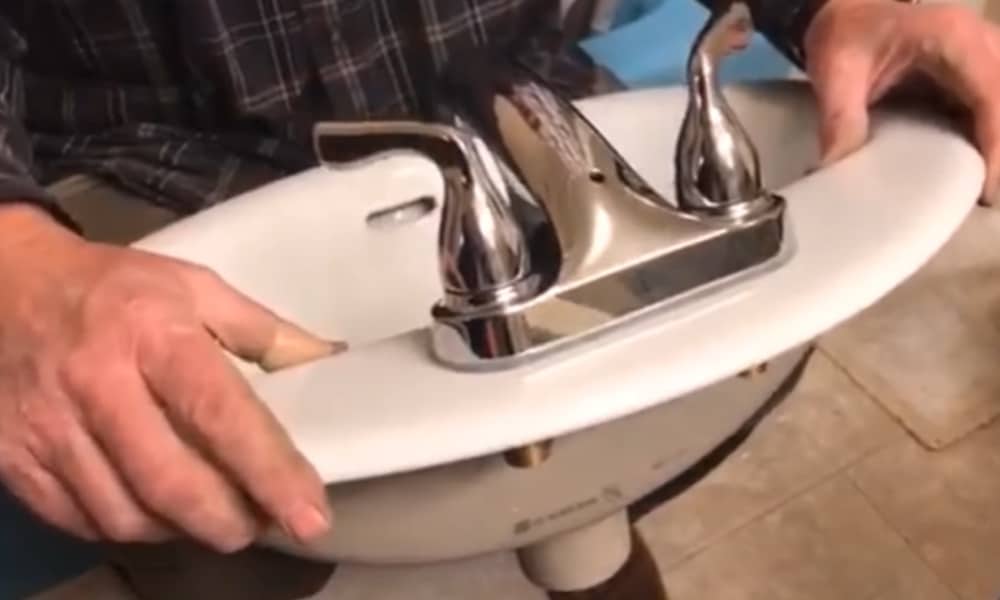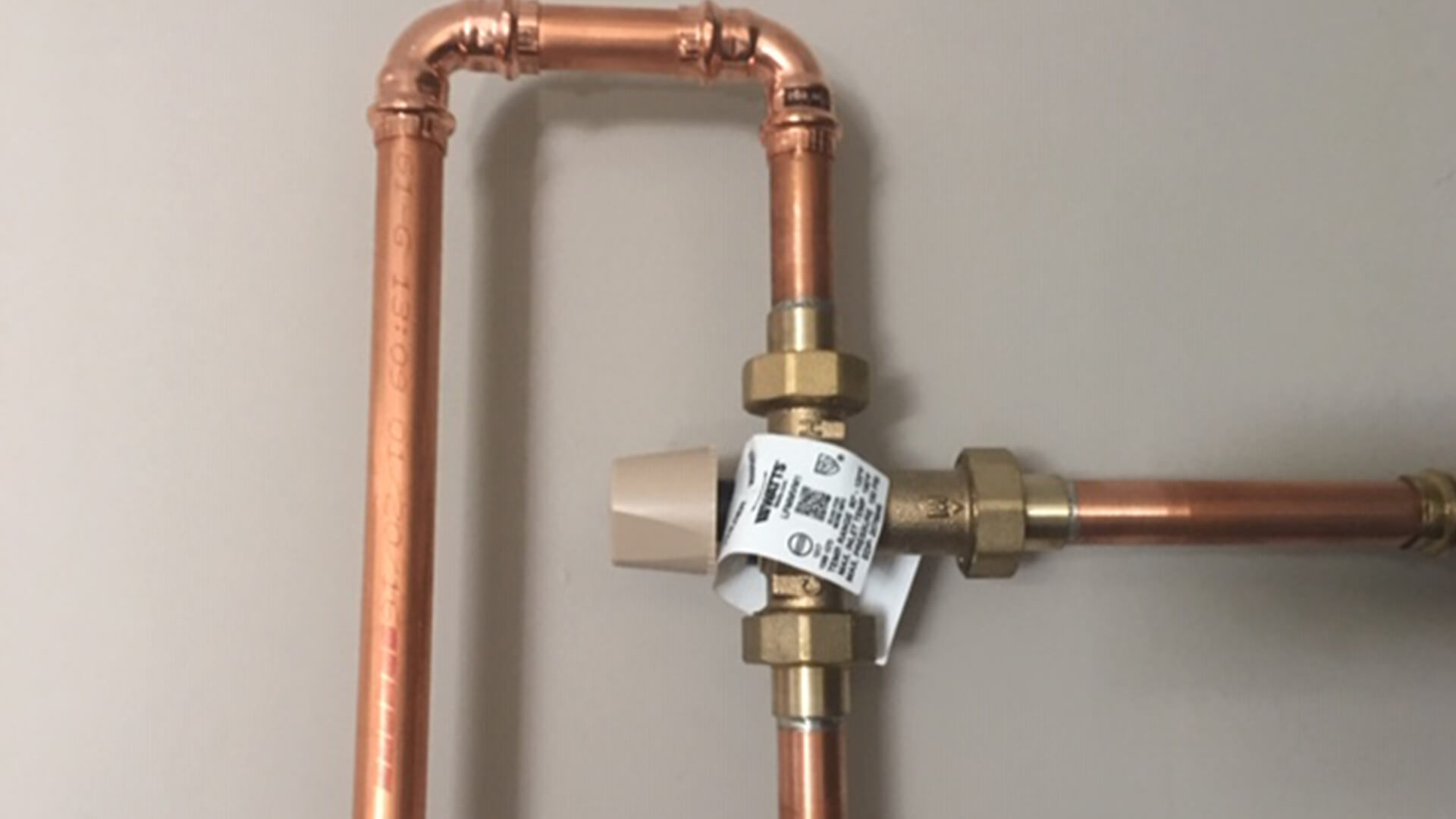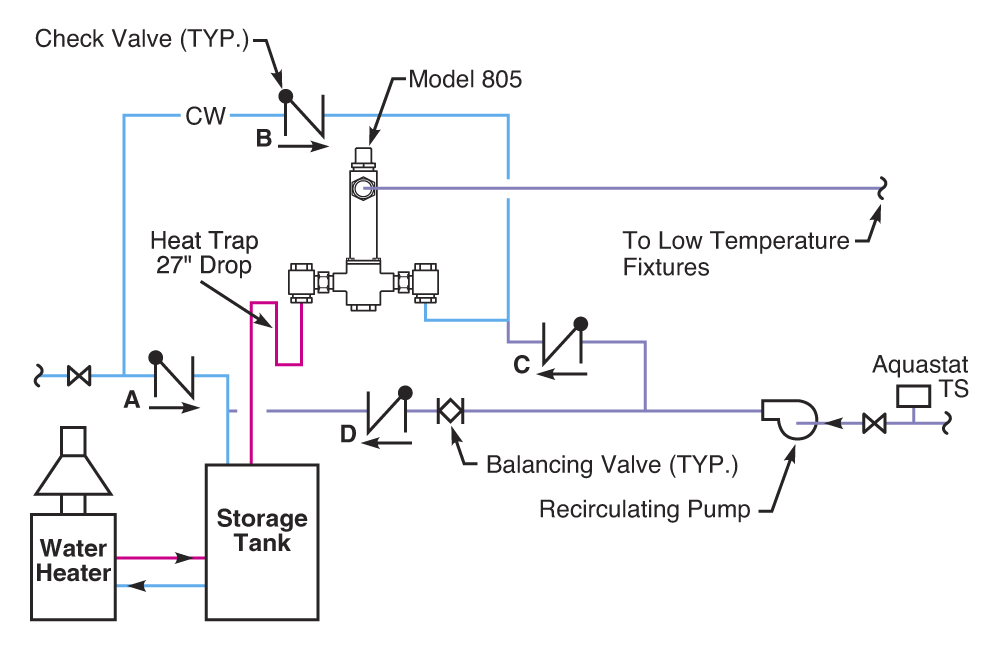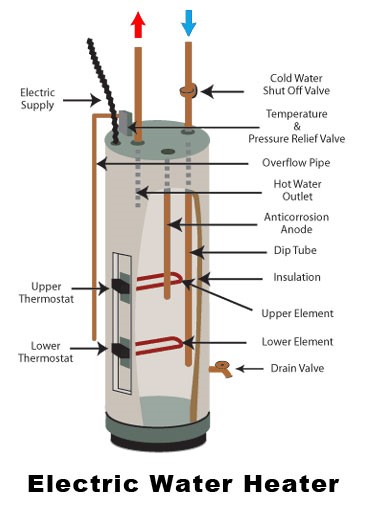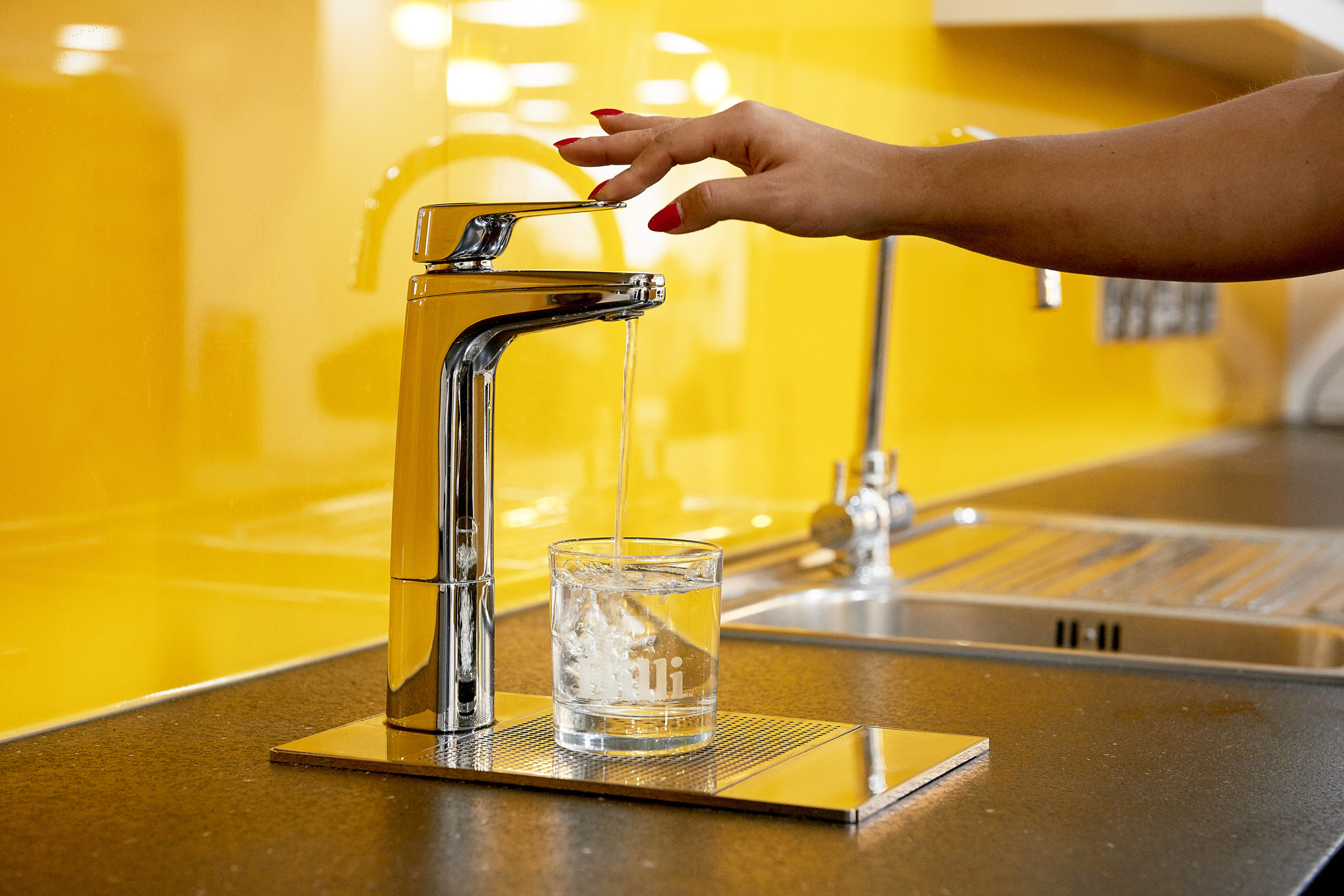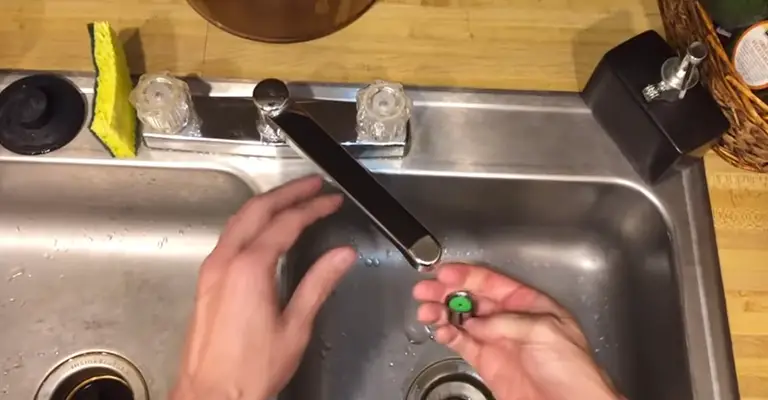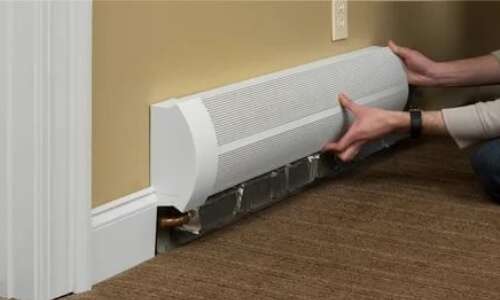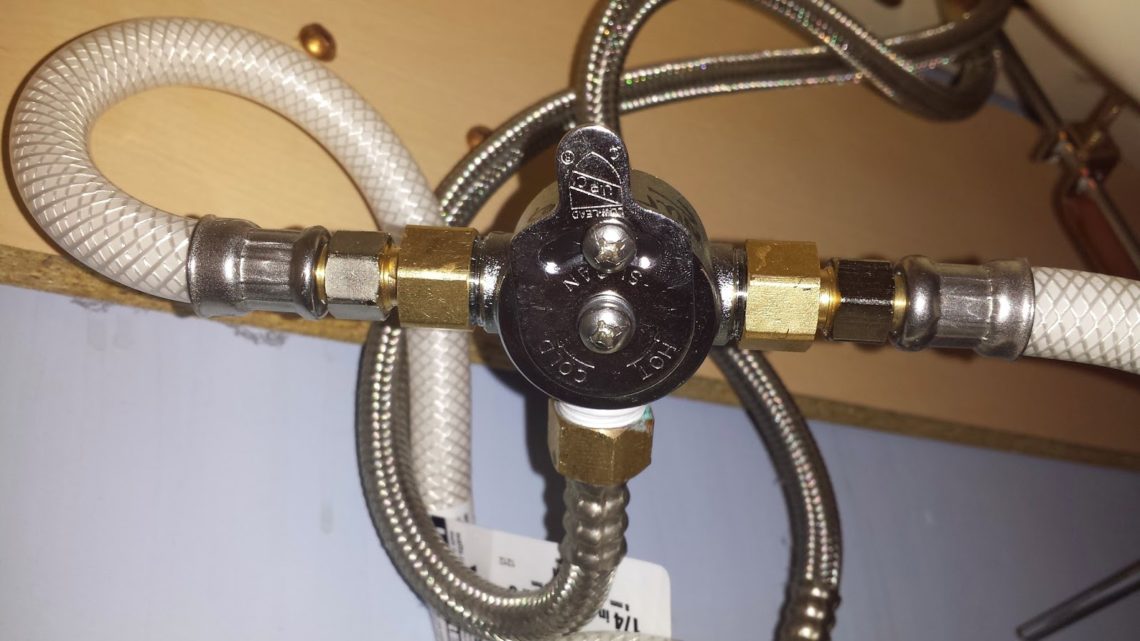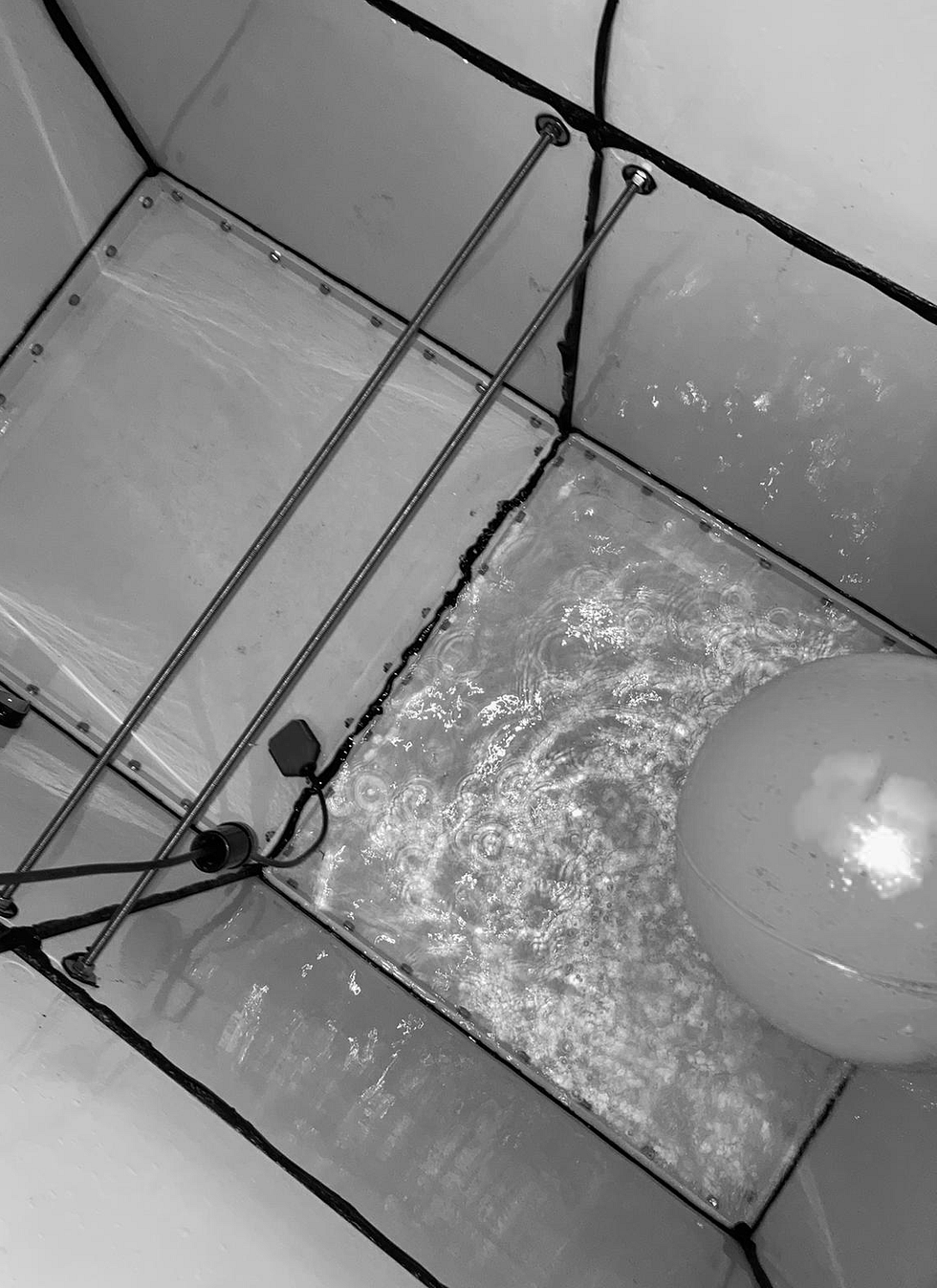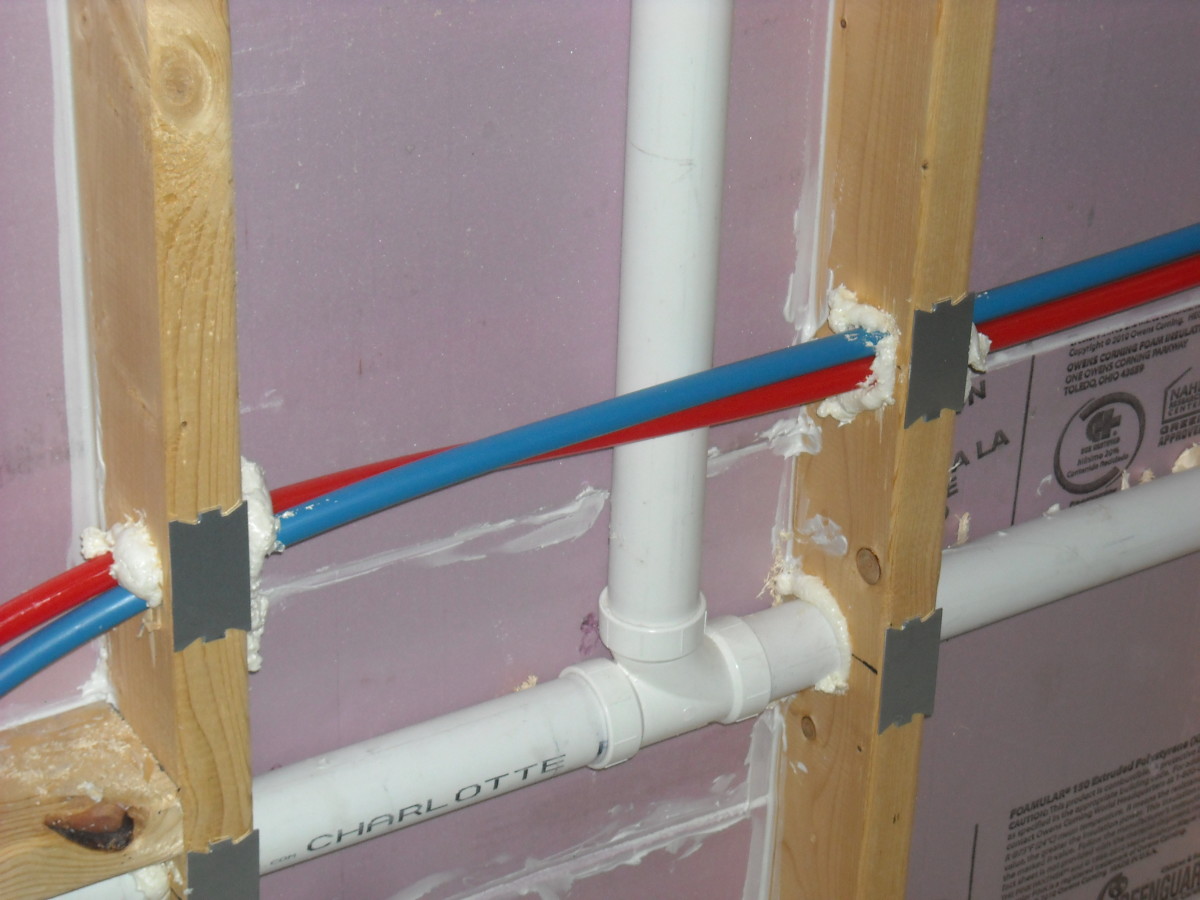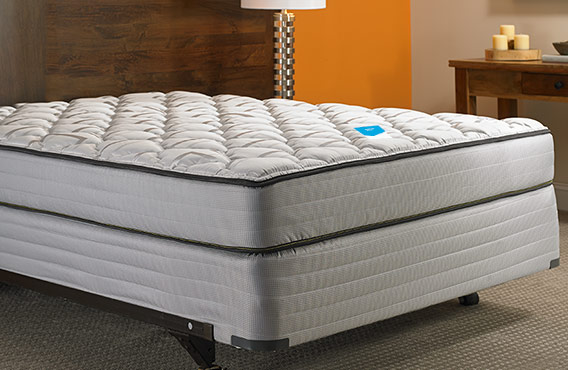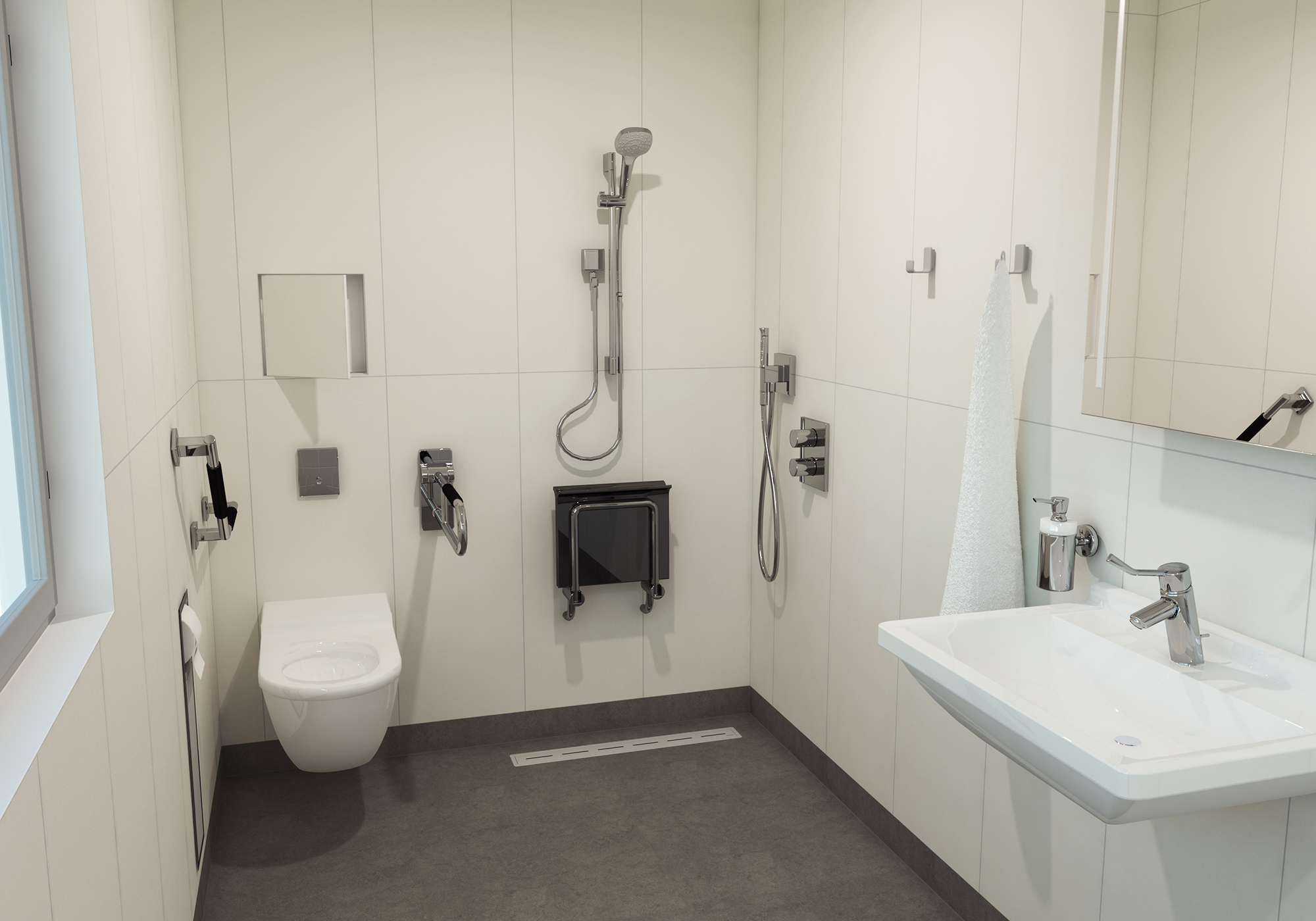When it comes to your bathroom sink, one of the most essential components is the hot and cold water faucet. This simple yet crucial feature allows you to control the temperature of your water for a comfortable and convenient experience. But have you ever wondered how it actually works? In this article, we'll take a closer look at the hot and cold water faucet diagram to help you better understand this important part of your daily routine.Hot and Cold Water Faucet Diagram
One of the most common issues with bathroom sink faucets is a leak. Not only is the constant dripping annoying, but it can also lead to wasted water and higher water bills. Thankfully, fixing a leaky faucet is a relatively simple task that you can do on your own. First, turn off the water supply to the sink. Then, use a wrench to remove the handle and replace the o-ring or washer inside. Reassemble the faucet and turn the water back on to see if the leak is fixed.How to Fix a Leaky Bathroom Sink Faucet
Before we dive into the hot and cold water faucet diagram, it's important to understand the role of supply lines. These are the pipes that bring water from the main water supply to your faucet. Hot water supply lines are connected to your water heater, while cold water supply lines come directly from the main source. Knowing this will help you troubleshoot any issues with your water flow or temperature in the future.Understanding Hot and Cold Water Supply Lines
To get a better understanding of how the hot and cold water faucet works, let's take a look at a diagram of bathroom sink plumbing. The hot and cold water supply lines connect to the faucet, which is controlled by the handle. Inside the faucet, there are two valves - one for hot water and one for cold water. When the handle is turned, these valves open to allow water to flow through the faucet and into the sink.Diagram of Bathroom Sink Plumbing
If you're experiencing issues with your hot and cold water valves, it may be necessary to replace them. This is a more involved task, but it can save you from having to replace the entire faucet. First, turn off the water supply to the sink. Then, remove the handle and any other components to access the valves. Use a wrench to unscrew and remove the old valves, and replace them with new ones. Reassemble the faucet and turn the water back on to test the new valves.Replacing Hot and Cold Water Valves in Bathroom Sink
If you're looking to upgrade your bathroom sink faucet, you may be wondering how to install it. The first step is to turn off the water supply to the sink. Then, remove the old faucet and clean the area where the new one will be installed. Next, follow the manufacturer's instructions for installing the new faucet, making sure to connect the hot and cold water supply lines correctly. Once the faucet is securely in place, turn the water back on and test it out.How to Install a Bathroom Sink Faucet
In some cases, you may have a separate hot and cold water valve for your bathroom sink, but in others, there may be a single mixing valve. This valve blends the hot and cold water together to achieve the desired temperature. The diagram of a hot and cold water mixing valve will show two inlets for the hot and cold water supply lines, and one outlet for the mixed water to flow through to the faucet.Hot and Cold Water Mixing Valve Diagram
If you're experiencing problems with your hot and cold water in the bathroom sink, there are a few potential causes. If the water is not hot enough, it could be an issue with your water heater. If the water is too hot, the mixing valve may need to be adjusted. If there is no water coming out at all, there may be a blockage in the pipes or an issue with the supply lines. Consulting a professional plumber can help you identify and fix these issues.Troubleshooting Hot and Cold Water Issues in Bathroom Sink
Another common issue with bathroom sink faucets is uneven hot and cold water flow. This can be easily fixed by adjusting the water flow for each valve. To do this, you'll need to remove the handle and adjust the valve using a screwdriver. Turn the screw clockwise to decrease the flow and counterclockwise to increase it. Test the water flow and continue adjusting until it is even and comfortable for your needs.How to Adjust Hot and Cold Water Flow in Bathroom Sink
Lastly, let's take a look at a hot and cold water supply line diagram for a bathroom sink. This diagram will show the two supply lines connecting to the faucet, as well as any additional features such as a mixing valve or water filter. It's important to understand this diagram in case you ever need to troubleshoot or replace any components in your bathroom sink plumbing.Hot and Cold Water Supply Line Diagram for Bathroom Sink
The Importance of a Hot and Cold Diagram for Your Bathroom Sink

Efficient and Functional Bathroom Design
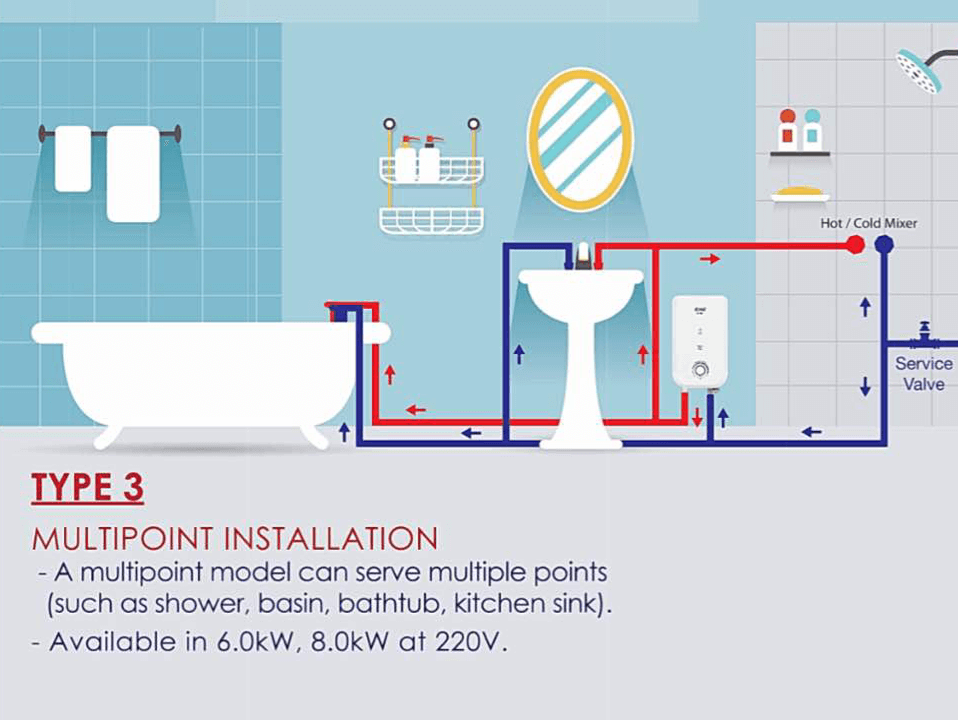 When it comes to designing your ideal bathroom, there are many factors to consider. From the layout and color scheme to the fixtures and storage options, every detail plays a crucial role in creating a space that is both aesthetically pleasing and functional. One often overlooked aspect of bathroom design is the hot and cold diagram for your bathroom sink. This simple but essential feature can significantly impact the overall efficiency and functionality of your bathroom.
Hot and Cold Diagram Explained
A hot and cold diagram is a visual representation of how the hot and cold water supply is distributed to your bathroom sink. It shows the pipes, valves, and faucets, as well as the direction of water flow. This diagram is typically included in the building plans and is crucial for plumbers and contractors during the installation process. However, it is also beneficial for homeowners to understand and be familiar with this diagram.
When it comes to designing your ideal bathroom, there are many factors to consider. From the layout and color scheme to the fixtures and storage options, every detail plays a crucial role in creating a space that is both aesthetically pleasing and functional. One often overlooked aspect of bathroom design is the hot and cold diagram for your bathroom sink. This simple but essential feature can significantly impact the overall efficiency and functionality of your bathroom.
Hot and Cold Diagram Explained
A hot and cold diagram is a visual representation of how the hot and cold water supply is distributed to your bathroom sink. It shows the pipes, valves, and faucets, as well as the direction of water flow. This diagram is typically included in the building plans and is crucial for plumbers and contractors during the installation process. However, it is also beneficial for homeowners to understand and be familiar with this diagram.
The Benefits of a Hot and Cold Diagram
 Efficient Water Usage
Having a hot and cold diagram for your bathroom sink allows you to easily identify and locate the valves and pipes that control the water supply. This knowledge can help you troubleshoot any issues with your plumbing and make necessary repairs without having to call a professional. It also allows you to shut off the water supply to your sink in case of an emergency, such as a leak or burst pipe.
Optimal Temperature Control
With a hot and cold diagram, you can see the exact location of the hot and cold water pipes, which can help you determine the cause of any temperature inconsistencies in your sink. For example, if you notice that the hot water is not as hot as it should be, you can use the diagram to trace the pipes and valves and locate any potential issues.
Customization and Personalization
Having a hot and cold diagram for your bathroom sink also allows for customization and personalization. For example, you may want to install a separate hot water line for your sink to provide hotter water for things like washing your face or shaving. With the diagram, you can easily identify and add this feature during the installation process.
Efficient Water Usage
Having a hot and cold diagram for your bathroom sink allows you to easily identify and locate the valves and pipes that control the water supply. This knowledge can help you troubleshoot any issues with your plumbing and make necessary repairs without having to call a professional. It also allows you to shut off the water supply to your sink in case of an emergency, such as a leak or burst pipe.
Optimal Temperature Control
With a hot and cold diagram, you can see the exact location of the hot and cold water pipes, which can help you determine the cause of any temperature inconsistencies in your sink. For example, if you notice that the hot water is not as hot as it should be, you can use the diagram to trace the pipes and valves and locate any potential issues.
Customization and Personalization
Having a hot and cold diagram for your bathroom sink also allows for customization and personalization. For example, you may want to install a separate hot water line for your sink to provide hotter water for things like washing your face or shaving. With the diagram, you can easily identify and add this feature during the installation process.
Final Thoughts
 A hot and cold diagram is a vital component of any efficient and functional bathroom design. It not only helps with troubleshooting and repairs but also allows for customization and personalization. So, before starting your bathroom renovation, make sure to include a hot and cold diagram in your plans. Trust us; it will make a significant difference in the long run.
A hot and cold diagram is a vital component of any efficient and functional bathroom design. It not only helps with troubleshooting and repairs but also allows for customization and personalization. So, before starting your bathroom renovation, make sure to include a hot and cold diagram in your plans. Trust us; it will make a significant difference in the long run.



.jpg)
